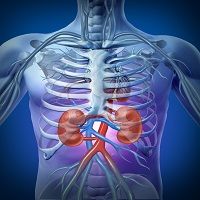Article
Hyperkalemia Treatment Isn't Getting the Attention it Needs
Author(s):
Hyperkalemia can be fatal and there is a serious need to provide improved treatment options.

Hyperkalemia can be fatal and there is a serious need to provide improved treatment options.
Rajiv Agarwal, MD, a professor of medicine at Indiana School of Medicine, addressed the condition and the latest developments in treatment, including a drug that was approved by the US Food and Drug Administration (FDA) just two days ago. His presentation at the 10th Annual Cardiometabolic Health Congress (CMHC 2015) in Boston, MA, showed exactly why hyperkalemia is such an important issue.
Data from multiple studies have shown that there is a significant relationship between mortality and both very high and very low potassium levels. Risk factors for hyperkalemia include diabetes, advanced age, and use of certain prescription drugs (NSAIDs, beta-blockers, heparin, etc.) If not controlled, it can lead to more serious complications such as cardiac arrhythmias hyperphosphatemia, and even death.
Agarwal referenced a study made up of over two million records from nearly 250,000 veterans. The participants had at least one hospitalization and one inpatient or outpatient serum potassium record. “They asked the question, ‘what is the chance of death one day after the hyperkalemic event,’” Agarwal explained during the presentation. The top predictors of hyperkalemia were chronic kidney disease (CKD) and the use of angiotensin-converting enzyme (ACE) inhibitors and angiotensin II receptor blockers (ARBs). However, it’s suggested that patients who don’t have CKD but have hyperkalemia could be very sick.
The CHARM trial looked at spironolactone, a prescription used for several conditions including to control high blood pressure. The researchers analyzed the rate of prescriptions for of the drug among those hospitalized for heart failure. For patients who were also receiving ACE inhibitors, it was concluded that spironolactone was profoundly associated with more hyperkalemia. Agarwal explained that this wasn’t surprising because there was a rise in the amount of prescriptions written.
The frequency of serum potassium plays a role in hyperkalemia. An analysis examined patients who had serum potassium of Ë‚3.5, ˃5.5, and ˃6.0 mEq/L (each versus a placebo). For patients with ˃6.0 serum potassium at any time during the study, Eplerenone worked better than the placebo. However, frequency of hyperkalemia didn’t go down after just one month, it takes time. They noted that many of the hyperkalemic episodes took place within a week or a month.
Used to treat hypertension, renin angiotensin aldosterone system (RAAS) inhibitors can commonly cause hyperkalemia. Part of the reason that novel treatments for hyperkalemia are necessary is because of the concerning reports about current therapies. The older medication Kayexalate (sodium polystyrene sulfonate) has been shown to reduce potassium; however, it has been tagged as dangerous, especially during the post-op period. Thiazide or loop diuretics may not be right for everyone, but they have been shown to get potassium levels down.
“Just two days ago, one of the drugs was approved for hyperkalemia,” Agarwal said, referring to the FDA approval of Veltassa (patiromer for oral suspension). A 52-week study posted in JAMA showed that the drug lowered potassium in the blood with those experiencing severe hyperkalemia having the biggest reduction. The medication candidate, zirconium cyclosilicate is backed with beneficial evidence in The New England Journal of Medicine, but is still pending approval.
“Hyperkalemia is strongly associated with adverse outcomes, especially when not associated with CKD. Newer therapies can effectively and rapidly treat hyperkalemia,” the presentation concluded.




